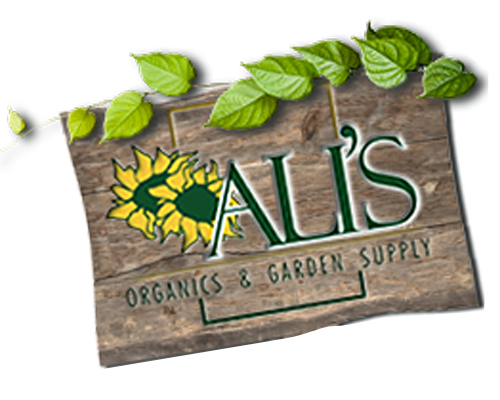Growing Large Onions
Posted March 07, 2021

If you love the sweet taste of large onions and want to grow them in your garden beds, you can do so with these follow along steps.
I have grown large onions for more than 30 years and still get great enjoyment from seeing these impressive plants grow into whoppers in my garden beds.
Large onions require a long growing season to achieve a good size, so they are one of the first crops to be sown in the greenhouse or indoor mini greenhouse (grow lights are beneficial). This begins the end of December or the first of January. Sow seeds into seed trays filled with a good moist seed starting mix. I like Ocean Forest and get the best results with it. Once the trays are filled, lightly firm them in with a tamper or hand to gently compact the soil. This leaves a small rim around the top of the tray, making a space to sow the seeds. Before sowing the seeds the trays should be watered with a fine mister or fine water head such as 1000 red head and let drain for approximately half an hour. Sow the seed evenly over the seed try of soil and lightly cover with a layer of vermiculite. Place the seed trays on a heat mat and use a dome to hold in moister. Germination will start between seven to 14 days. If you have missed the opportunity to start your own seeds, many times you can find onions already started in your local nurseries, but the choices of onion varieties are limited.
Once the seedlings start to germinate, remove the dome to allow air flow and reduce damping off. Grow the seedlings in the greenhouse or mini greenhouse throughout the winter and early spring maintaining a minimum temperature of 50-55 degrees Fahrenheit, then they will begin pricking out.
Ground preparation can begin early in the spring by adding plenty of well composted manure or compost as onions require a rich, fertile soil. It is possible to grow large onions on the same ground for a number of years with good results providing a high level of organic matter is maintained. And remember this can only be done if the plot remains clear from fungal diseases like white rot.
From March to April, depending on the weather, move the young onion plants into a cold frame to gradually harden them off before planting. After a week or two of hardening them off the plants are ready for planting into the vegetable plot and are usually about the thickness of a pencil by now.
Carefully prick apart the onion seedlings, being careful not to damage the roots. If room allows, plant 8-12” apart. This gives the plants as much room as possible to grow into good-sized bulbs. If you wish, plant a row of lettuce or sow a row of radish in between the onions as a catch crop, making use of the extra space while the onions are getting established.
Approximately three weeks after planting feed the onions with a sprinkle of high-nitrogen fertilizer, such as Fish Meal or Feather Meal. Simply sprinkle a little around each plant and carefully work in with a hand cultivator or hoe. In late June give them another feed, but only if the onions give and indication they require this extra food. Onions can tell you if they have enough nitrogen as the leaves will take up a crinkled appearance, almost looking as if someone had made a series of thumb indents up the leaf. When this is seen no further feeding is required. Knowing how they are growing is as important as to much feed will result in split or soft onions that do not keep very well.
Through the growing season the onion plot should be kept clean from weeds, being careful not to damage any of the onions. Watering is only necessary during dry weather and in the beginning of transplanting.
Onions naturally start to bulb up after the longest day (June 21). You can almost watch them grow at this time of year.
Large onions should be ready for harvesting from late July till late August, sometimes later. Lift bulbs as soon as the foliage start to bend down. Large onions should not be left in the ground until all the foliage dies down as this can affect the keeping qualities of bulbs.
Once the onions are lifted, trim off the foliage, leaving a neck of 4-6 inches long, then rub off any soil and lay in open trays in an airy shed until outer skin is dry.
Use the largest bulbs first. Kept in temperatures around 50-60 degrees they can keep well into February.



Comments (0 Comments)
There are no comments.
Post Comment